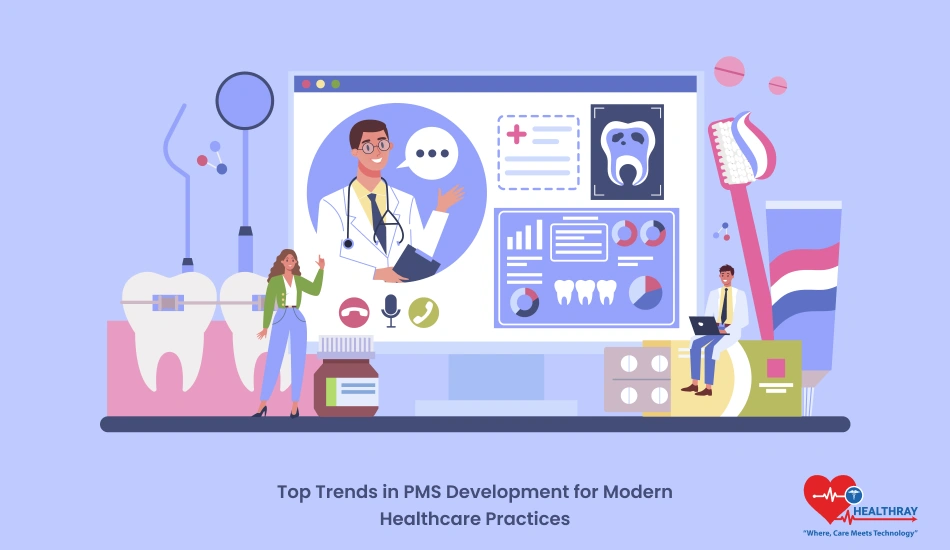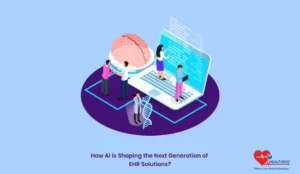Pharmacy management software (PMS) has become a cornerstone of modern healthcare practices. With the constant evolution of technology, staying on top of the latest trends in PMS development is essential for ensuring operational efficiency, improving patient outcomes, and staying competitive in a demanding industry.
If you’re wondering what’s next in the Pharmacy Management System, this post will cover the most critical developments shaping its future. From telepharmacy to artificial intelligence, we’ll dive into innovations that are transforming how healthcare providers, pharmacy owners, and IT managers operate. Let’s explore how these trends can help streamline processes, improve care, and secure patient data while addressing the challenges of adoption.
Telepharmacy: Expanding Access to Care
Telepharmacy has emerged as a game-changer in healthcare, offering an innovative way to provide pharmacy services remotely. This trend is particularly impactful in rural or underserved areas, where access to traditional pharmacies can be limited.
What Is Telepharmacy?
Telepharmacy refers to the delivery of pharmaceutical care through digital platforms, enabling licensed pharmacists to counsel patients, verify prescriptions, and oversee medication dispensing from a remote location. This model ensures that patients in remote or low-access regions still receive professional care without traveling long distances.
Benefits of Telepharmacy
- Improved Access: Patients in rural or underserved areas gain access to expert pharmaceutical advice and timely medication delivery.
- Convenience: Virtual consultations reduce the need for in-person visits, saving time for patients and pharmacists.
- Cost Efficiency: For pharmacies, telepharmacy reduces overhead costs by consolidating operations in central locations while maintaining service quality.
Implementation Insights
To integrate telepharmacy into your practice, consider the following steps:
- Invest in Technology: Platforms with video conferencing, secure data management, and integration capabilities are essential.
- Train Your Team: Both pharmacists and staff need training to adapt to remote workflows and ensure seamless service.
- Comply with Regulations: Telepharmacy is governed by specific legal and professional standards that vary by location. Ensure compliance to avoid penalties.
Challenges to Overcome
While telepharmacy offers numerous advantages, there are barriers to widespread adoption:
- Technology Costs: Initial investments in software and hardware can be significant.
- Patient Adoption: Some patients may be hesitant to switch to remote services, requiring education and trust-building efforts.
- Regulatory Hurdles: Laws around telepharmacy differ by region, and navigating these complexities can be challenging.
Automation in Pharmacy Operations: Enhancing Efficiency and Accuracy
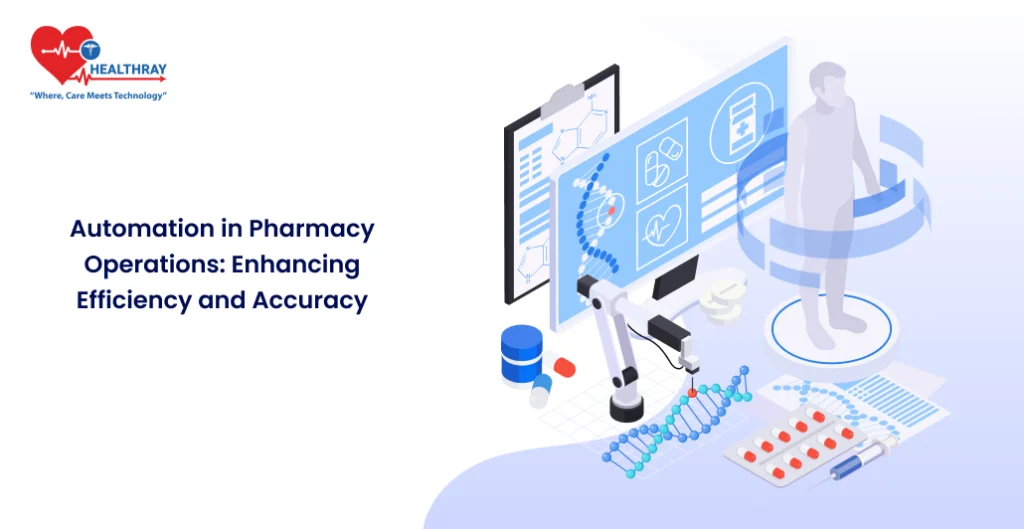
Automation is revolutionizing the way pharmacies manage their daily operations. By integrating robotic systems and advanced software, pharmacies are streamlining workflows, reducing errors, and optimizing resources. This trend is not just about improving efficiency; it’s about enabling pharmacies to provide better patient care while meeting the growing demands of modern healthcare.
What Is Pharmacy Automation?
Pharmacy automation involves using technology to perform routine tasks like dispensing medications, managing inventory, and tracking prescriptions. This includes systems like automated dispensing cabinets, robotic prescription fillers, and software for inventory management.
Key Benefits of Automation
- Increased Accuracy: Automated systems reduce the risk of human error in dispensing medications, ensuring patients receive the correct dosage every time.
- Time Savings: Pharmacists can focus on patient counseling and care instead of being tied up with repetitive tasks.
- Better Inventory Management: Real-time tracking systems prevent stockouts and overstocking, saving costs and ensuring essential medications are always available.
- Cost Reduction: While the upfront cost of automation can be high, it ultimately reduces labor and operational costs over time.
Real-World Applications
- Automated Dispensing Systems: Machines that fill prescriptions quickly and accurately, reducing wait times for patients.
- Inventory Monitoring Tools: Advanced software that predicts demand and notifies staff when to reorder supplies.
- Barcode Scanning: Ensures every medication dispensed matches the prescription, providing an additional layer of safety.
Challenges in Implementing Automation
Adopting automation isn’t without its hurdles:
- High Initial Costs: Robotic systems and software require significant investment, which may be a barrier for smaller pharmacies.
- Training Needs: Staff must be trained to use new systems effectively, which can take time and resources.
- Integration Issues: New technologies must seamlessly integrate with existing systems, which can require custom solutions.
Why Automation Is Essential
Pharmacy automation is not just a luxury; it’s becoming a necessity. As pharmacies handle increasing patient loads and stricter regulatory requirements, automation offers a way to maintain high service levels without compromising on safety or efficiency.
Artificial Intelligence and Data Analytics: Smarter Systems for Better Decisions
Artificial Intelligence (AI) and data analytics are transforming the pharmacy management landscape. These technologies provide powerful tools to optimize decision-making, predict trends, and enhance patient care. For pharmacies, AI isn’t just a buzzword—it’s a practical solution for solving everyday challenges and anticipating future needs.
How AI and Data Analytics Are Used in PMS
AI systems leverage algorithms to analyze large datasets, identify patterns, and offer actionable insights. Data analytics complements this by presenting trends and predictions that pharmacies can use to improve their operations.
Applications of AI in Pharmacy Management
- Personalized Medication Plans: AI analyzes patient data to recommend tailored medication regimens.
- Inventory Optimization: Predictive analytics forecasts medication demand, reducing wastage and ensuring stock availability.
- Medication Error Prevention: AI flags potential drug interactions and prescription errors, improving patient safety.
- Chatbots for Customer Support: AI-powered virtual assistants handle common customer queries, freeing up pharmacists for more complex tasks.
Benefits of AI and Data Analytics
- Improved Decision-Making: Data-driven insights help pharmacy owners and operators make informed choices about inventory, staffing, and services.
- Enhanced Patient Care: AI systems predict patient needs, enabling proactive care and better health outcomes.
- Efficiency Boost: Automating tasks like prescription validation and demand forecasting saves time and reduces operational burdens.
Challenges to Consider
Adopting AI and analytics isn’t without complexities:
- Data Privacy Concerns: Handling sensitive patient data requires strict compliance with privacy regulations.
- High Implementation Costs: Developing or purchasing AI systems can be expensive, particularly for small or independent pharmacies.
- Technical Expertise: Pharmacies may need to hire or train personnel to manage and interpret data analytics tools.
The Role of AI in the Future of Pharmacy
AI and data analytics aren’t just tools; they’re becoming foundational elements of modern pharmacy management. From predicting health trends to streamlining daily operations, these technologies are poised to reshape how pharmacies function.
Integration with Digital Health Platforms: Connecting Systems for Seamless Care

The integration of Pharmacy Software System with digital health platforms is bridging gaps between various healthcare services. This trend ensures that pharmacies, doctors, and patients are better connected, enabling more coordinated and efficient care.
What Is Digital Health Integration?
Digital health integration involves connecting PMS with other healthcare platforms like electronic health records (EHRs), telemedicine systems, and wearable health devices. This creates a centralized hub for accessing patient information and streamlining care.
Key Benefits of Integration
- Improved Care Coordination: Pharmacies can easily access a patient’s medical history, ensuring prescriptions are accurate and safe.
- Enhanced Communication: Real-time data sharing between healthcare providers and pharmacies leads to faster decision-making and fewer delays.
- Streamlined Workflows: Automation of data entry and sharing reduces repetitive tasks, saving time for staff.
- Better Patient Engagement: Patients can track their prescriptions and health data through integrated platforms, fostering transparency and trust.
Practical Examples
- Medication Management: PMS connected with EHRs can alert pharmacists to potential drug interactions or allergies.
- Remote Monitoring: Wearables send health data to digital platforms, helping pharmacists provide more tailored advice.
- Refill Reminders: Automated notifications for refills enhance medication adherence among patients.
Challenges in Integration
- Compatibility Issues: Not all systems are designed to work together, requiring customized solutions.
- Data Security Concerns: Increased connectivity can create vulnerabilities in protecting sensitive patient information.
- Regulatory Barriers: Compliance with data-sharing regulations like HIPAA must be a top priority.
The Future of Integration
As healthcare becomes more patient-centric, integrating digital health platforms with PMS will be a critical step. This trend enables a holistic view of patient health, ensuring that pharmacies play an active role in improving outcomes and streamlining care delivery.
Regulatory Compliance and Data Security: Safeguarding Patient Information
In an era where technology plays a pivotal role in healthcare, regulatory compliance and data security have become non-negotiable priorities for pharmacy management systems. As pharmacies adopt advanced tools, ensuring the safety and privacy of patient information is critical to maintaining trust and avoiding legal complications.
Why Regulatory Compliance Matters
Regulations like HIPAA in the United States and GDPR in the European Union govern how patient data is handled, stored, and shared. Non-compliance can lead to hefty fines, reputational damage, and even legal action.
Key Compliance Requirements
- Data Privacy: Patient data must remain confidential and accessible only to authorized personnel.
- Secure Data Storage: Systems should employ encryption and robust access controls to protect information.
- Audit Trails: PMS must log all access and modifications to patient records for accountability and transparency.
- Regular Updates: Software must be updated to address emerging threats and comply with evolving regulations.
Common Challenges in Compliance
- Complex Regulations: Staying up-to-date with different regional and international laws can be overwhelming for pharmacy operators.
- Cost of Compliance: Implementing secure systems and conducting regular audits can strain budgets, especially for smaller pharmacies.
- Staff Training: Employees need to be trained in compliance protocols to avoid accidental breaches.
Data Security: Protecting Patient Information
With the rise of cyber threats, safeguarding sensitive data has become more challenging. Pharmacies must invest in robust security measures, including:
- Encryption: Ensures data is secure during transmission and storage.
- Access Controls: Limits data access to authorized users only.
- Regular Penetration Testing: Identifies vulnerabilities in systems before they can be exploited.
- Incident Response Plans: Prepares pharmacies to respond effectively to data breaches or cyberattacks.
The Bigger Picture
Regulatory compliance and data security are not just legal obligations; they are essential for building trust with patients and partners. Pharmacies that prioritize these aspects can confidently adopt new technologies, knowing that patient information is safe.
Patient-Centered Care Enhancements: Personalizing the Pharmacy Experience
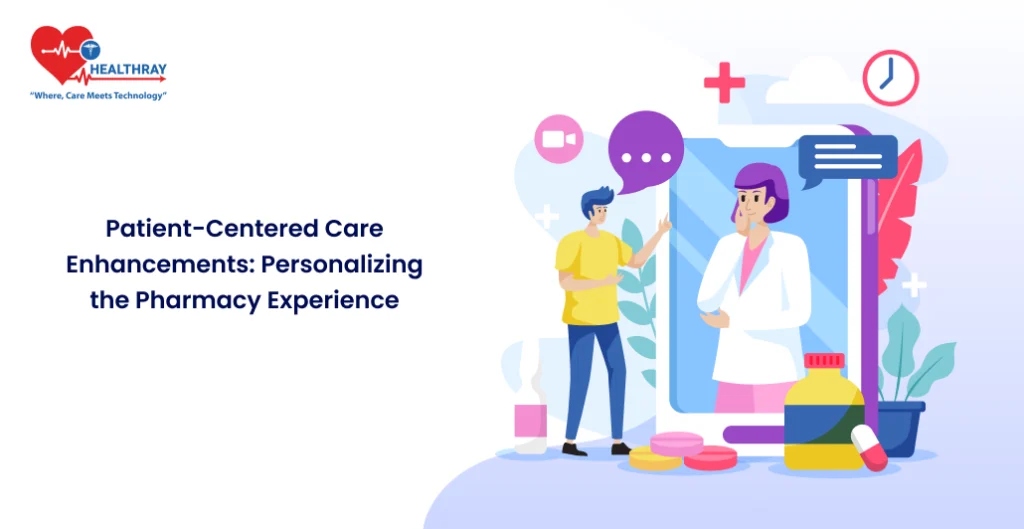
Patient-centered care is reshaping the healthcare industry, placing the patient at the heart of every decision and process. In pharmacy management, this trend translates into tools and strategies that enhance communication, improve medication adherence, and deliver personalized experiences.
What Is Patient-Centered Care?
Patient-centered care focuses on understanding and addressing the unique needs, preferences, and circumstances of each individual. In the pharmacy context, this involves personalized medication plans, proactive engagement, and tools that empower patients to manage their health better.
Key Innovations in Patient-Centered Pharmacy Care
- Personalized Medication Management: Systems that use patient data to tailor medication regimens, dosages, and delivery schedules.
- Medication Adherence Tools: Reminders, digital apps, and follow-up alerts help patients stay consistent with their prescriptions.
- Health Monitoring Devices: Integration with wearables and remote monitoring tools provides real-time insights into patient health, enabling pharmacists to offer timely interventions.
- Patient Education Platforms: Digital systems offering educational materials, videos, and FAQs to help patients understand their medications and health conditions.
Benefits for Patients
- Empowerment: Tools and apps give patients more control over their healthcare.
- Improved Outcomes: Personalized approaches lead to better adherence and fewer complications.
- Convenience: Digital platforms reduce the need for in-person visits, saving time and effort.
Benefits for Pharmacies
- Stronger Relationships: Engaging with patients builds trust and loyalty.
- Better Insights: Data collected from monitoring and adherence tools helps optimize services.
- Competitive Edge: Patient-centered care positions pharmacies as leaders in innovation and service quality.
Challenges to Overcome
- Technology Adoption: Patients and staff may need time to get used to new tools and systems.
- Privacy Concerns: Managing sensitive health data requires strict compliance with regulations.
- Cost of Implementation: Tools and training demand upfront investment, which can be a hurdle for smaller operations.
Why Patient-Centered Care Matters
As patients increasingly expect healthcare services tailored to their needs, pharmacies that prioritize patient-centered strategies are better positioned to succeed. This approach not only improves health outcomes but also fosters stronger connections between patients and their care providers.
Challenges and Considerations in Adopting These Trends
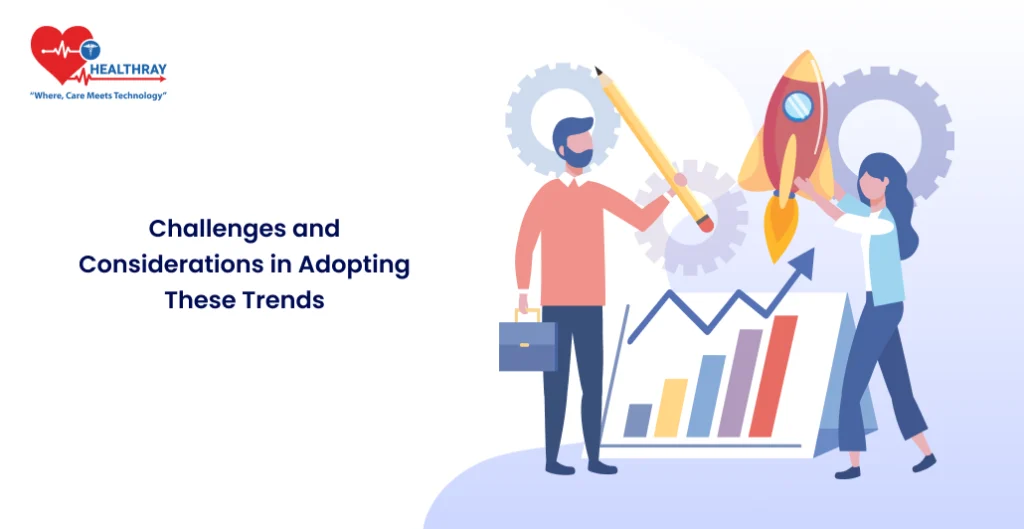
While the latest trends in pharmacy management software (PMS) bring transformative benefits, adopting them isn’t always straightforward. From financial constraints to resistance to change, pharmacies and healthcare providers must navigate several challenges to implement these innovations successfully.
Common Challenges
- High Initial Costs: Many of these technologies, like AI systems and automation tools, come with significant upfront investments. Smaller pharmacies may struggle to allocate funds for hardware, software, and integration services.
- Staff Training: Employees must learn to operate new systems, which takes time and resources. Resistance to adopting unfamiliar tools can slow down implementation.
- Integration Complexities: Modern tools often need to work alongside existing systems. Ensuring seamless integration can be technically demanding and may require custom solutions.
- Regulatory and Legal Hurdles: With new technology come stricter compliance requirements. Navigating these regulations can be daunting, especially in regions with evolving healthcare laws.
- Cybersecurity Risks: Advanced systems often deal with large volumes of sensitive data. Without robust security measures, pharmacies risk data breaches and potential fines.
- Patient Acceptance: Not all patients are comfortable with remote services, digital platforms, or advanced technologies. Building trust and familiarity can take time.
Practical Considerations for Overcoming Challenges
- Prioritize Scalable Solutions: Start small with scalable tools. For instance, implement a basic inventory management system before moving to full automation.
- Invest in Training: Ensure staff members are well-equipped to use the new systems through workshops and hands-on training sessions.
- Partner with Experts: Work with experienced vendors and consultants to streamline system integration and meet compliance requirements.
- Focus on Patient Education: Introduce patients to new systems through tutorials, demos, and clear communication about benefits.
- Adopt a Phased Approach: Instead of a large-scale rollout, consider implementing technologies gradually to minimize disruption and manage costs.
Looking Ahead
The road to adopting these trends may be challenging, but the potential benefits—improved efficiency, better patient outcomes, and stronger competitive positioning—far outweigh the initial obstacles. Pharmacies that proactively address these considerations can lead the charge in modernizing healthcare delivery.
Conclusion
Pharmacy management software is no longer just a tool—it’s a driving force behind the modernization of healthcare practices. From telepharmacy to artificial intelligence, these trends are shaping a future where efficiency, personalization, and connectivity are at the forefront.
While adopting these advancements comes with its challenges, the benefits for pharmacies, healthcare providers, and patients are undeniable. By staying ahead of these trends, you can enhance patient care, streamline operations, and position your pharmacy or healthcare practice for long-term success.The future of the Hospital Management System is here. Embracing it today ensures you’re not just keeping up but leading the way in providing smarter, more effective healthcare solutions.
